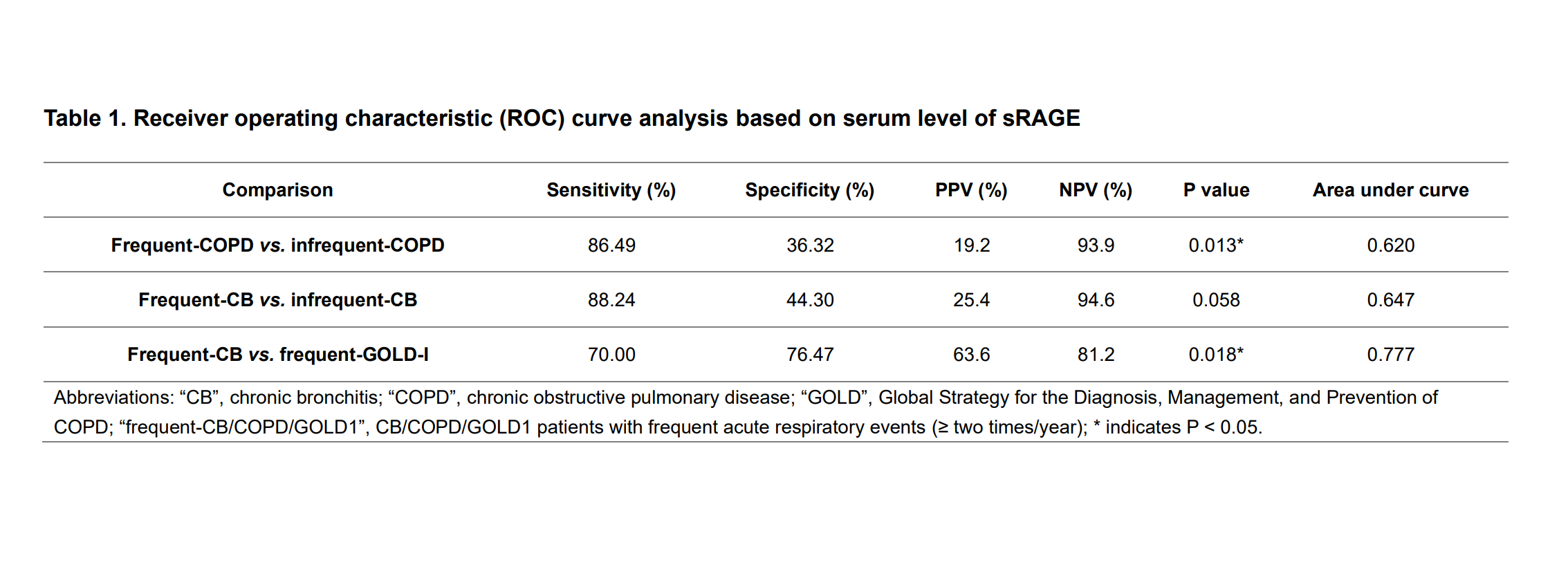Abstract
Background
The frequent episodes of ARE in COPD and CB have been associated with poor prognosis. Assessment of ARE risk is essential for the management of COPD and CB, but relies on the ARE history provided subjectively. CB patients report a history of ARE similar to that of GOLD-I patients. Blood-biomarkers might help to classify COPD and CB patients with frequent ARE (frequent-COPD/CB) in a more objective way.
Methods
96 CB, 82 GOLD-I, 169 GOLD-II and -III patients were enrolled in COMPASS sub-cohort. The serum levels of IP-10, sRAGE, CCL16, and HbA1c were compared between subjects with frequent (?two times/year) and infrequent ARE in COPD (n=37 vs. 214), GOLD-I (n=10 vs. 72) and CB (n=17 vs. 79), followed by receiver operating characteristic (ROC) analysis.
Results
Only sRAGE level significantly decreased in frequent-COPD compared to infrequent-COPD (P=0.020), but increased in frequent-CB compared to frequent-GOLD-I (P=0.028). ROC analysis suggested that sRAGE significantly distinguished frequent- and infrequent-COPD, frequent- and infrequent-CB, frequent-CB and frequent-GOLD-I (Table 1).
Conclusion
The serum level of sRAGE is a potential biomarker to distinguish frequent-COPD, the different expression pattern of sRAGE in COPD and CB implies different pathogenesis. sRAGE also distinguishes frequent-CB and frequent-GOLD-I, implies its potential role in the progression from frequent-CB to frequent-COPD.